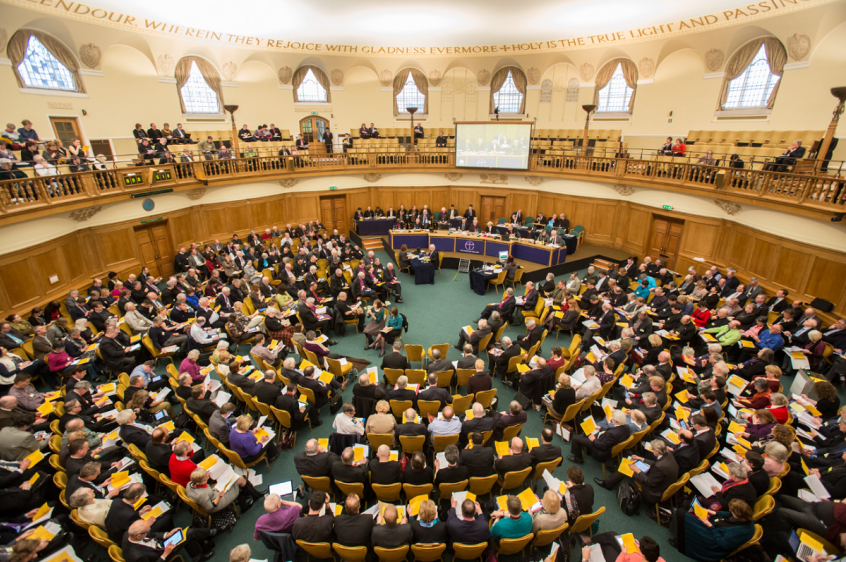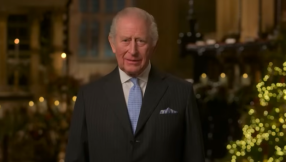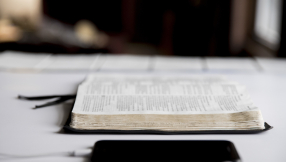
In a previous article for Christian Today I suggested that the Church of England needs a new settlement which would allow conservatives and liberals to each have their own province (or provinces) within which they could either maintain or alter the current doctrine of the Church of England on marriage and sexuality and the disciplines that go with it.
This suggestion prompts the obvious question: 'What would such a settlement look like in practice?'. In this article I shall attempt to answer this question by sketching out what a province for conservatives (let's call it the 'Province of Mercia') might look like, drawing on material I produced for the Church of England Evangelical Council's paper, Visibly Different.
The formation of the Province
The Province of Mercia would be established through a measure passed by General Synod and endorsed by both Houses of Parliament and receiving Royal Assent. This measure would contain a provision that it could not be repealed except with the consent of the province.
The province would come into being by means of parishes voting in their PCCs to leave their existing diocese and transfer to a diocese in the new province instead. To give the new province stability, parishes would not be able to return to their previous diocese for a period of ten years. Apart from that requirement, parishes would be free to move from the provinces of Canterbury and York to the new province, or to move back the other way.
The organisation of the province
Like the existing provinces of Canterbury and York, the new province would consist of parishes, deaneries, archdeaconries and dioceses. The number of dioceses that would initially be formed would obviously depend on how many parishes opted to join the new province, but one possible pattern would be for there to initially be four dioceses, one in the Southwest, one in the South and Southeast, one in the Midlands and East Anglia, and one in the North. Chaplaincies in Europe would come under the diocese for the South and Southeast.
Each diocese would initially have one bishop and one of these would be the archbishop of the province. There would be no fixed archiepiscopal diocese and the office of archbishop would subsequently be held by the senior bishop of the province.
A parish church in each diocese would be the cathedral. This would contain the bishop's chair and would be used for diocesan services such as the enthronement of the bishop, ordinations, and the renewal of ordination vows on Maundy Thursday. The diocese would be named after the location of the cathedral and the incumbent would carry the title Dean. There would be no cathedral chapter and when not being used for diocesan services the cathedral would act as a normal parish church.
The doctrine, law and liturgy of the province
The doctrine of the Province of Mercia would be that of the Church of England at the point of its formation, minus any elements that were supportive of same-sex relationships and gender transition. In order to publicly show its alignment with other orthodox Anglican around the world, the province could formally declare its allegiance to the 2008 Jerusalem Declaration and its adherence to the Fundamental Declarations of the Global South Fellowship of Anglican Churches.
The law of the province would be that of the Church of England at the point of its formation minus any elements that did not apply to the new province (such as provision for Cathedral chapters) and any elements that were supportive of same-sex relationships and gender transition.
The liturgy of the province would be the 1662 Book of Common Prayer, the 1662 Ordinal and Common Worship. Any liturgy that had been introduced into Common Worship to mark same-sex relationships or gender transition would not be permissible.
Ministry in the province
The forms of ordained and lay ministry current in the Church of England would continue in the new province. Women would therefore be eligible to serve as deacons, priests and bishops. Parishes unable to accept the ministry of women as priests or bishops could request to come under the oversight of a male bishop who shared their convictions.
The Patronage system would continue in the new province. The rights of presentation held by bodies such as the Church Pastoral Aid Society and Church Society and by private individuals would remain unchanged. Rights of presentation belonging to a bishop or to the Dean and Chapter of a cathedral would be automatically transferred to the bishop of a parish's new diocese.
Candidates for ordained ministry would be selected using Bishops Advisory Panels. These would be organised by the Church of England Ministry Division as at present, but the selectors would be members of the new province. The dioceses would establish a list of approved colleges and courses for ordination training and might also establish their own training courses.
Clergy from the other provinces in the Church of England could transfer to serve in the new province subject to them being judged suitable by the bishop of the diocese concerned and subject to their personal life being in accordance with the requirements that clergy should not be involved in a sexual relationship outside (heterosexual) marriage and that gender transition would be a bar to
ministry.
Because clergy in the province would be ministers of the Church of England they would continue to be eligible to serve as Anglican chaplains in hospitals, schools, prisons and the armed forces.
The governance of the province
The Province of Mercia would be governed by a Convocation consisting of the bishops and elected members of the clergy and an elected House of Laity.
The members of the Convocation and of the House of Laity would be members of the General Synod of the Church of England. They would speak and vote at Synod and the House of Bishops on matters of common concern to the Church of England as a whole. They would not speak on matters pertaining to the Provinces of Canterbury and York unless invited to do so and would not be able to vote on such matters. Legislation passed by the General Synod would only apply to the Province of Mercia if there was specific agreement from the province that it should, with appropriate modifications if necessary This would be similar to the way in which existing measures of the Church of England can be adopted with modifications for the Diocese in Europe, the Isle of Man and the Channel Islands.
The Convocation and the House of Laity would also form the Provincial Synod of the Province of Mercia. This would meet separately from the General Synod to consider matters concerning province. It would have the same law-making powers as the General Synod, but could only create law on matters relating to the province.
Each diocese and deanery would have its own synod and there would be Diocesan Boards of Finance and Education. A Diocesan Board of Education would be necessary because church schools belonging to parishes that had become part of one of the new dioceses would be the responsibility of that diocese.
Where church schools served both parishes in a new diocese and parishes in one of the old dioceses then there would need to be local arrangements to ensure that there was fair representation from both dioceses in the governance of these schools. This would be similar to the arrangements already in place in ecumenical schools.
It would be possible for dioceses of the Province of Mercia to reach agreement with dioceses in the other provinces to provide shared services on matters such as property maintenance, safeguarding, or legal services.
The dioceses in the new province would relate to the Church of England Pensions Board and the Church Commissioners in the same way as the dioceses in the provinces of Canterbury and York.
Establishment
The Province of Mercia would remain part of the established church. Parishioners would therefore continue to have the right to worship and to be baptized, married or buried in or from their parish church in the province in accordance with the law applicable within the province. Bishops in the province would be appointed by the king on the basis of names agreed by a Crown Nominations Commission consisting of representatives from the province. Legislation from the Provincial Synod would need to receive royal assent after having been considered by the Ecclesiastical Committee in Parliament.
Ecumenical Relationships
The Provincial Synod would decide whether the existing ecumenical relationships of the Church of England would apply on the basis of whether the theology and practice of the other churches involved was compatible with that of the province. Clergy from the Anglican Network in Europe could be granted permission to serve in the new province under the terms of the existing 1967 Overseas and Other Clergy (Ministry and Ordination) Measure.
In line with the Pauline principle that we should not say to other members of the body of Christ 'I have no need of you' (1 Corinthians 12:12-26), the creation of new province along the lines sketched out above would mean that the Church of England could stay together, but in a way which respected the conscientious convictions on both sides and would prevent the Church of England fracturing entirely.
It would also mean that at least one part of the Church of England would be able to maintain close links with the majority of Anglican churches round the world who would be unwilling to maintain ties with Anglicans in England who decide to accept either same-sex marriage or same-sex relationships in general.
Martin Davie is a lay Anglican theologian and Associate Tutor in Doctrine at Wycliffe Hall, Oxford.













